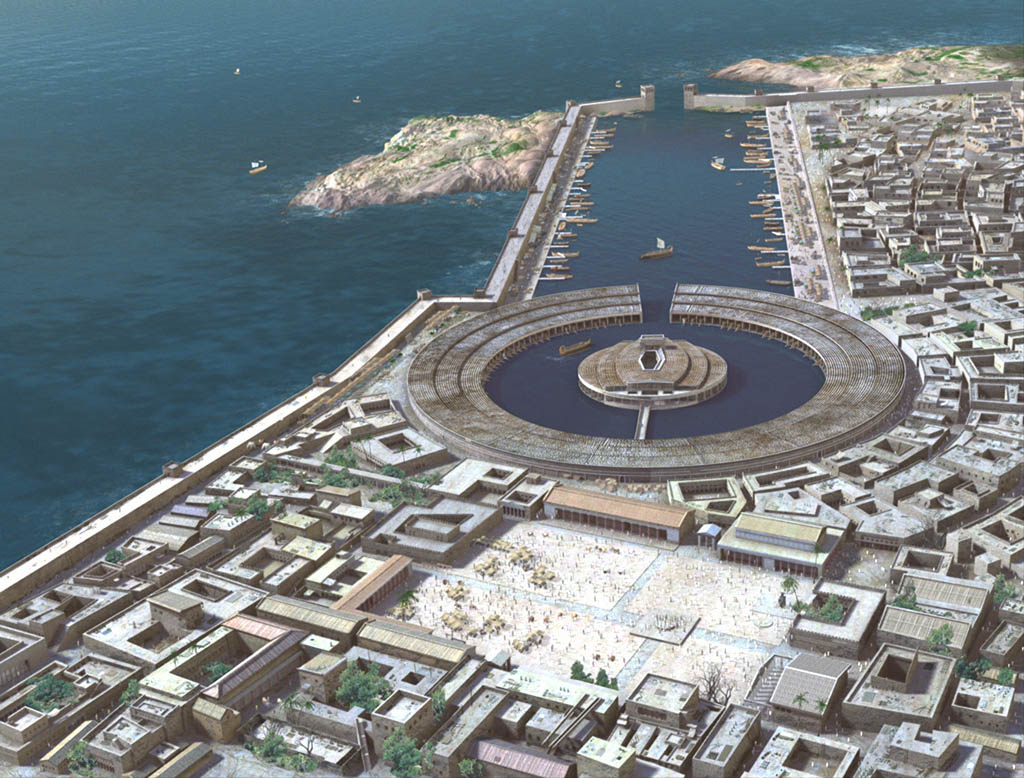Wine production in Tunisia started as early as the 1st millennium BC in Carthage and surrounding areas. Mago Barca, son of Hamilcar was instrumental in documenting the care of vines and the process of making wine in his notable treatise consisting of 28 books on agronomy and viticulture. When Carthage fell at the hands of the Romans in 146 BC, the only book they procured was that of Mago’s.
The 8th Century AD Tunisia was conquered by the Arabs, therefore minimizing, but not eliminating Tunisian wine production for years to come.
In the early 1800’s Tunisia saw an influx of Italian, followed by French winemakers establishing themselves in Grombalia. Then 1881, the French had conquered Tunisia and introduced them to a larger scale of wine production. In present day Tunisia, wine production is on the upswing and sold locally as well as exporting to Europe, Canada, Russia and the US.
(285 BC – 228 BC)
Hamilcar Barca
– Hamilcar Barca (285 BC – 228 BC)
– Hamilcar: meaning “Melqart the Gracious” in Phoenician.
– Barca: thought to have been derived from Punic word meaning “lightning”.
– Hamilcar, the most successful general in the Punic Wars commanded the Carthage naval fleets as well as the army which gained territory in Italy, North Africa, and Spain. His innovative strategies and political maneuvering assured him success and wealth in his long career and helped solidify his armies through internal turmoil as well as defeat his enemies in times of disadvantage.
– First Punic War (264 BC – 241 BC) – war fought with the Roman Republic to establish control of the strategic islands of Corsica and Sicily
– Carthage lost the war and control of Sicily but were able to remain in control of Corsica and Sardinia for the price of a high war.
indemnity.
– Hamilcar resigned as general rather than seek peace terms with the Romans.
-Without strategic position in the Mediterranean with the lost fortresses in Sicily, Corsica and Sardinia, Hamilcar decided to expand Carthaginian territory to the rich-in-silver, Spain. He battled Iberian tribes alongside his son Hannibal, son-in-law Hasdrubal the Handsome, and Numidian and Phoenician troops to secure wealth for Carthage.
-During this time, Hamilcar made Hannibal swear an oath to never befriend Rome.
-In approximately 228 BC, Hamilcar drowned while crossing a river near Helice while retreating from a siege.
Hannibal replaced Hamilcar as the general of the Carthaginian army in 221 BC. He famously led Carthage in the Second Punic War.
(247 BC - ~182 BC)
Hannibal Barca
– Second Punic War(218 BC – 201 BC)
– Started by Hannibal breaking a territory agreement with Rome stating Carthaginian troops would not cross the Ebro River in Northeastern Spain and eventually (and most famously) attacking Rome by crossing the Italian Alps with African Elephants.
– It is known as being one of the deadliest of wars in ancient timee involving modern day Italy, Spain, North Africa and Greece.
– The war resulted in Roman victory with the conquest of Carthaginian Iberia and unification of Numidia (modern day Tunisia, Lybia and Algeria.)
– Carthage signed a peace treaty with Rome stipulating that they would no longer maintain a mercenary army.
I will either find a way or make one.
(243 BC – 203 BC)
Mago Barca the “Godsent”
Accompanied Hannibal during the invasion of the Italian Peninsula. Mago played key roles in many battles in Italy and the Iberian Peninsula, notably the battle of Cartagena in Southern Spain, a port town he established and named after Carthage.
Mago, the youngest son of Hamilcar and a Carthaginian General was also a distinguished and visionary agronomist who for the first time in history wrote a treatise containing 28 books about agronomy and viticulture.
This diverse and wide ranging document assembled and streamlined procedures stemming from the Numidian, Punic, Phoenician and Roman civilizations and included subjects such as “How to plant vines”, “Notes on health of cattle”, and the famous “How to make the best passum (raisin wine)”.
This lengthy document of over 20 books revolutionized the agricultural world and was in such prominence that it was the only book retrieved back to Rome after the final demise of Carthage around 146 BC, where it was swiftly translated under direct order of the Roman Senate, first to Greek by Cassius Dionysius then to Latin by D. Junius Silenus. Others later followed suit in translation or adoption such as the Greek agricultural writer Diaphones of Nicaea who abridged the work into six books under the name Georgica (translated to agriculture in Greek).
Fragments of Mago’s life’s work still survives today in quotations by famous Roman agricultural writers, such as Pliny the Elder “Naturalis Historia”, Columella “De Agricultura” and Varro “De Re Rustica”.
